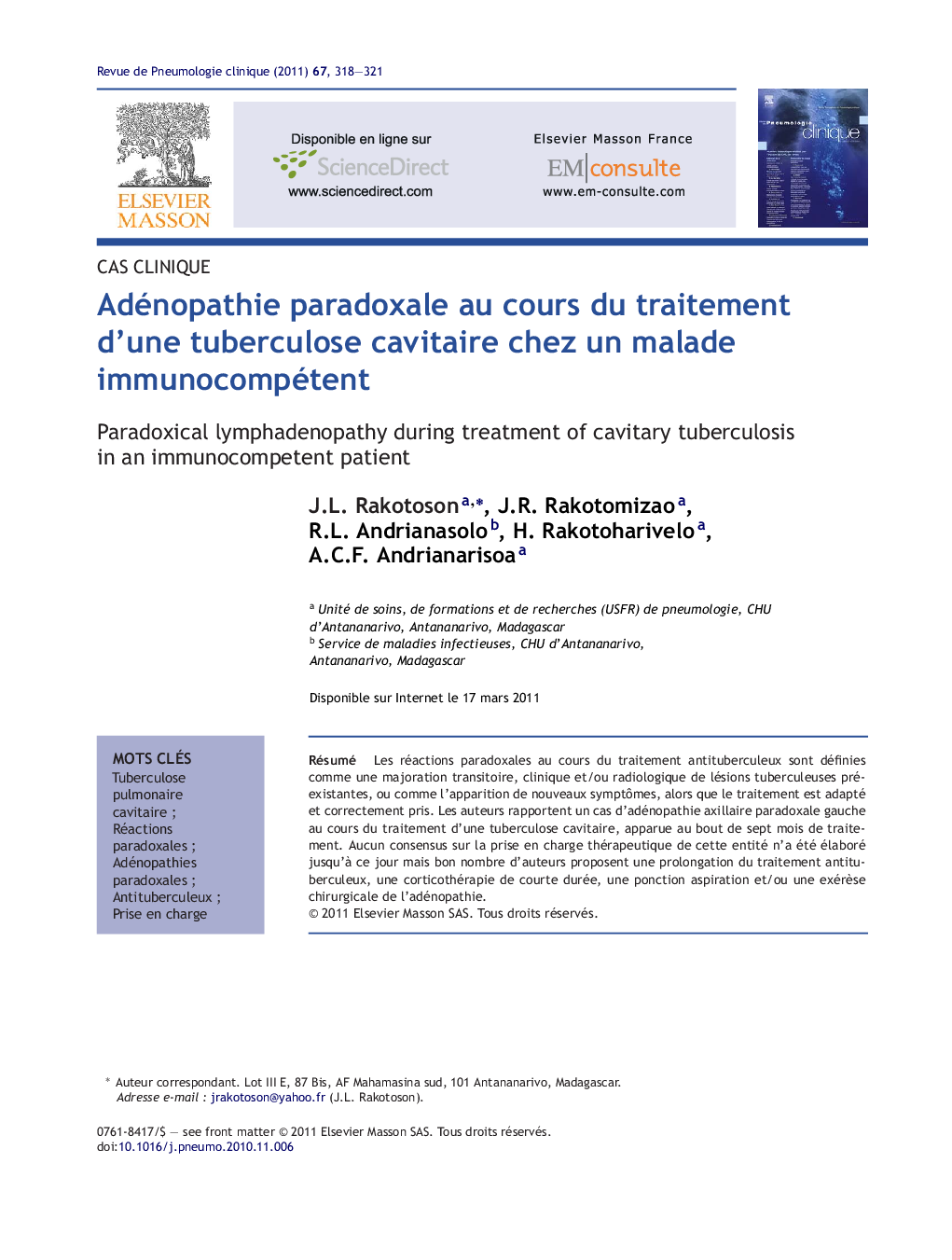| Article ID | Journal | Published Year | Pages | File Type |
|---|---|---|---|---|
| 3419693 | Revue de Pneumologie Clinique | 2011 | 4 Pages |
RésuméLes réactions paradoxales au cours du traitement antituberculeux sont définies comme une majoration transitoire, clinique et/ou radiologique de lésions tuberculeuses préexistantes, ou comme l’apparition de nouveaux symptômes, alors que le traitement est adapté et correctement pris. Les auteurs rapportent un cas d’adénopathie axillaire paradoxale gauche au cours du traitement d’une tuberculose cavitaire, apparue au bout de sept mois de traitement. Aucun consensus sur la prise en charge thérapeutique de cette entité n’a été élaboré jusqu’à ce jour mais bon nombre d’auteurs proposent une prolongation du traitement antituberculeux, une corticothérapie de courte durée, une ponction aspiration et/ou une exérèse chirurgicale de l’adénopathie.
SummaryThe paradoxical reactions during antituberculosis treatment are defined as a transient, clinical and/or radiological increase in preexisting tuberculous lesions or as the emergence of new symptoms, while treatment is adapted and correctly taken. The authors report a case of paradoxical left axillary lymphadenopathy during the treatment of cavitary tuberculosis, which appeared after seven months of treatment. No consensus on the therapeutic management of this entity has been developed to date but many authors propose an extension of antituberculosis treatment, a short corticosteroid therapy, an aspiration puncture and/or a surgical excision of the lymphadenopathy.
